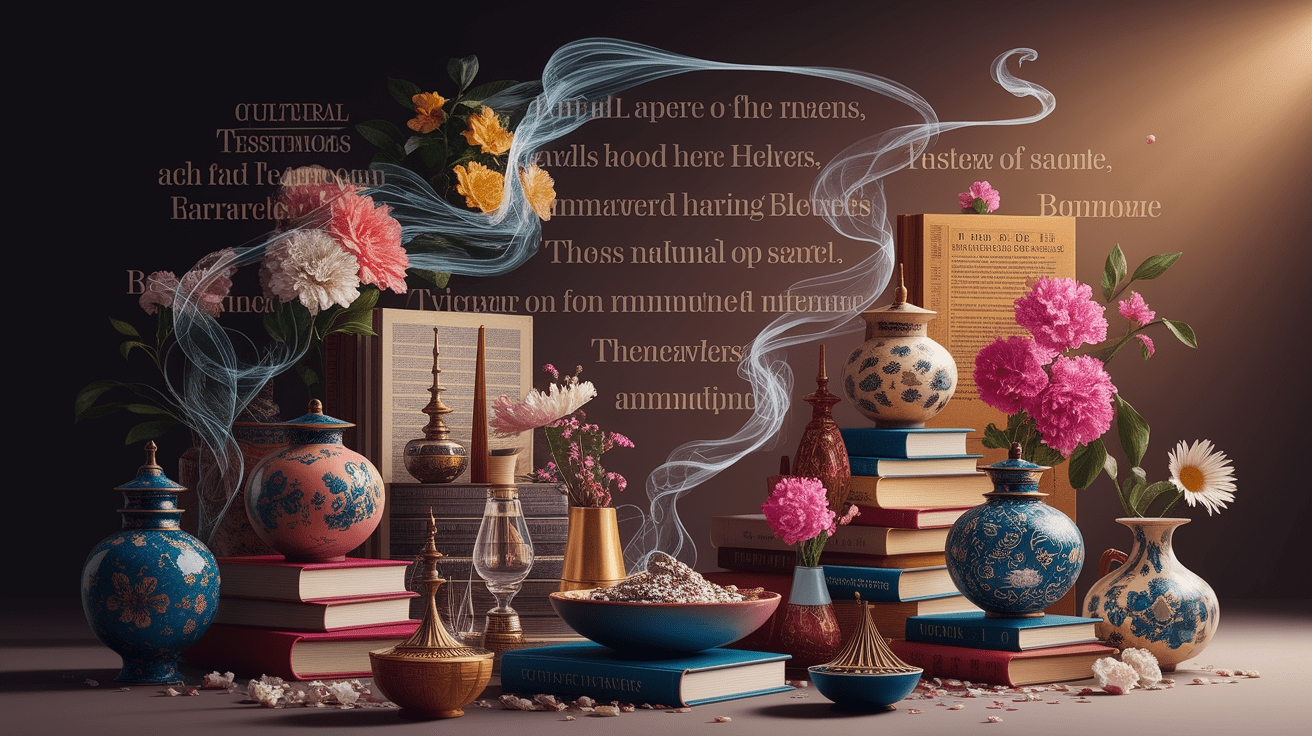Scents of the Past: The Psychology Behind Smell and Memory
Scents That Speak: An Introduction to Scent-Memory Psychology
Scent-memory psychology examines the profound way in which olfactory stimuli trigger recollections, often more vividly than visual or auditory prompts. Within cognitive and behavioral psychology, this phenomenon is recognized as a distinct interplay between sensory input and memory systems. A familiar fragrance may bring forth an involuntary memory, a vivid episode from one’s past, encapsulating the essence of the “Proust phenomenon” — named after Marcel Proust’s literary account of a madeleine cake invoking rich autobiographical memories. This field not only explores the biological and psychological mechanisms behind such responses but also their unequaled emotional depth.

The Science Behind Smell and Memory
From a neuroscience perspective, the pathways of olfactory processing set smell apart from other senses. Odors bypass the thalamus — the brain’s sensory relay station — and communicate directly with the limbic system, including the olfactory bulb, hippocampus, and amygdala, regions essential to emotional memory and episodic memory. Functional MRI studies reported in Frontiers for Young Minds have shown that odor-linked memories activate emotional brain areas more strongly than visual cues, providing a neurological explanation for why certain scents can unleash highly vivid, long-lasting recollections.

This direct neural route underscores the specialized mechanisms of olfactory memory encoding and retrieval. The sensory psychology framework explains that smell activates memory formation processes rapidly, enhancing consolidation by engaging emotional associations — a process distinct from that of visual or auditory stimuli.
Emotional Resonance: Why Scents Stir Stronger Responses
The intimate connection between scent and emotion rests on the structural proximity in the brain between olfactory neurons and regions governing emotional regulation. As documented by Harvard Medical School’s Magazine, scent-triggered memories can exert enduring effects on mood and well-being. Positive fragrances may lower stress and promote health, while unpleasant odors can heighten alertness, enhancing memory retention by increasing attentional focus, as outlined in Vectair Systems’ research summary.

The emotional resonance is not simply a by-product of recall; it is an integral part of the memory itself. This explains why scent-linked events often feel richer in sensory detail and emotional depth, making them powerful tools for therapeutic use — but also potentially triggering trauma in sensitive contexts.
Cultural and Literary Testimonies to Scent Memory
Historical and cultural narratives demonstrate how fragrance and emotions intertwine across societies. In literature, Proust’s madeleine episode stands as a renowned illustration of involuntary autobiographical memory triggered by taste and scent, a case often referenced in scent-memory scholarship (SmellTaste). Similar practices appear in rituals worldwide — from incense in spiritual ceremonies to familiar food aromas signifying heritage.

These testimonies affirm that scent’s mnemonic influence transcends individual biology, reflecting broader human experiences. As noted by Harvard Medical School, cultural traditions often employ fragrance intentionally to evoke nostalgia, sustain communal identity, and encode meaning in collective memory.
Applications of Scent Memory Psychology
The applied dimensions of scent-memory research are extensive:

- Scent Marketing: Retail brands employ signature scents to establish emotional connections with customers, enhancing brand recall and loyalty.
- Environmental Design: Hospitality venues integrate fragrance to shape atmosphere and improve guest experience through subconscious psychological responses to smell.
- Therapeutic Settings: Fragrance therapy and aromatherapy psychology aim to reduce anxiety, aid in PTSD treatment, and improve quality of life for dementia patients by using scent to trigger preserved memories.
- Medical Research: Clinical studies explore how scent affects memory consolidation and retrieval, leveraging odor cues in recovery programs.
Research summarized by Harvard Gazette highlights how organizations capitalize on the scent-memory nexus both commercially and therapeutically, reinforcing its relevance across disciplines.
From Whiffs to Wisdom: Conclusion on Scent-Memory Psychology
Scent-memory psychology reveals a distinctive and potent channel for memory formation and recall. By engaging direct pathways to regions responsible for emotion and autobiographical memory, olfactory stimuli can evoke vivid recollections that are rich in personal significance. Scientific evidence confirms that smells often surpass other sensory cues in activating emotional and mnemonic responses — a fact harnessed in cultural traditions, commercial strategies, and therapeutic interventions.
Understanding this connection allows for a more informed application of scent in diverse contexts, from enhancing daily environments to supporting mental health treatments. As research progresses, it may further illuminate how smell’s powerful link to memory can be refined into strategies for cognitive support, emotional well-being, and even improved learning outcomes.







